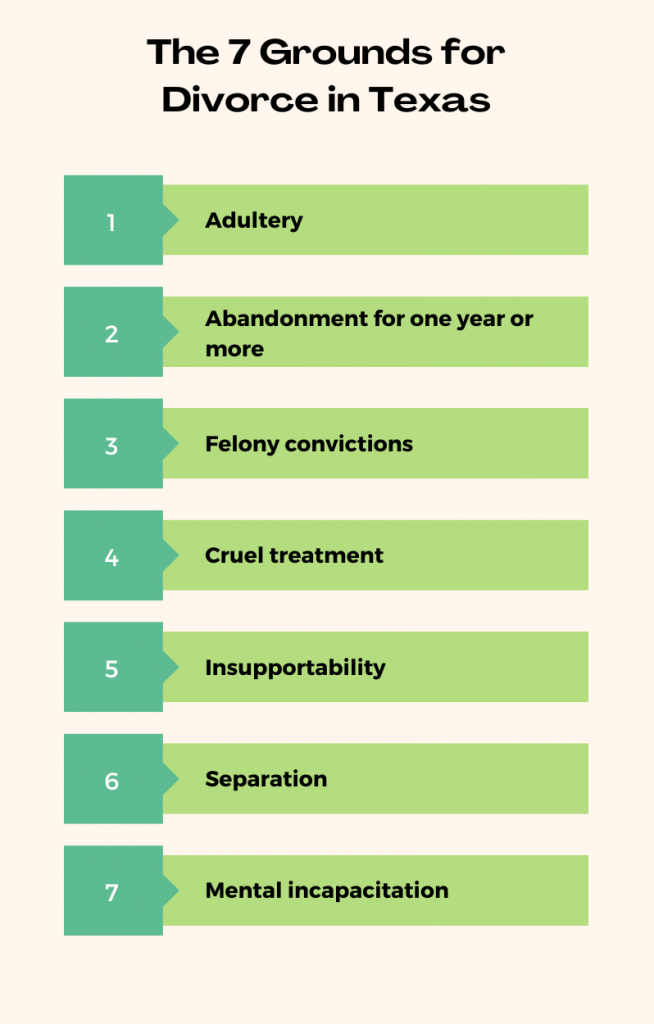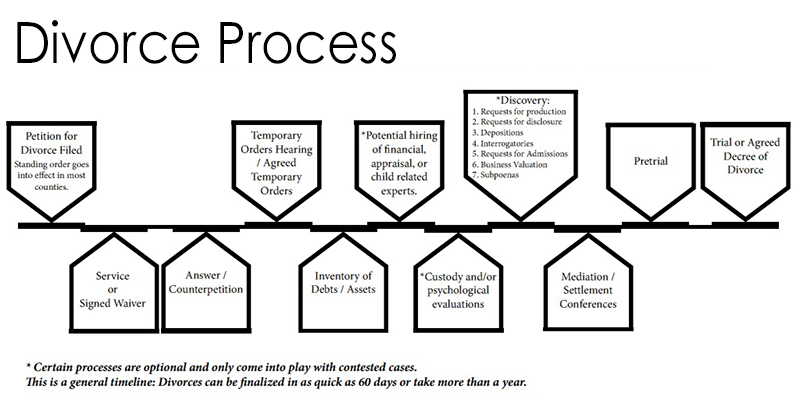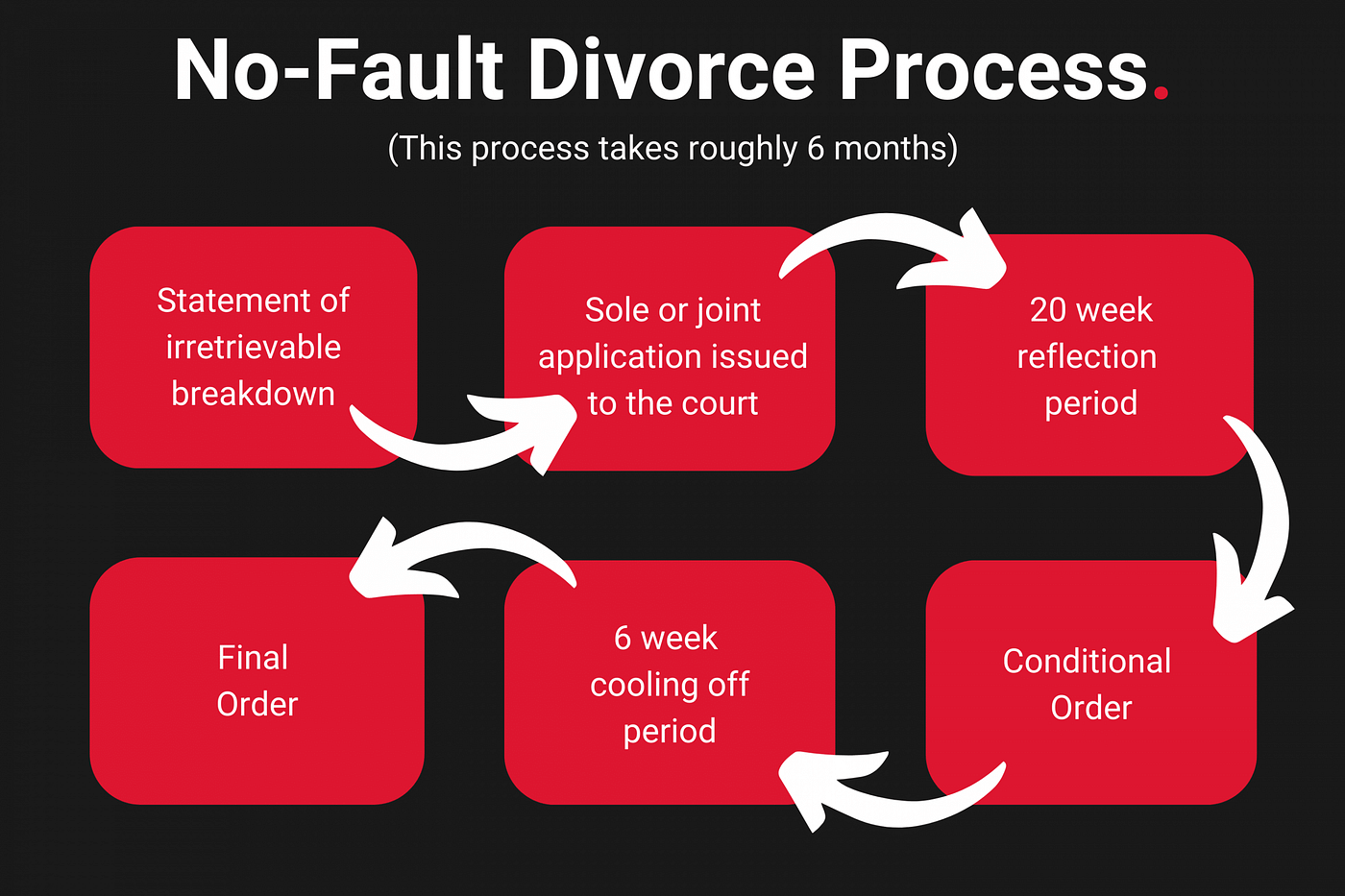Is Texas a No-Fault Divorce State?
When a marriage comes to an end, navigating the complex terrain of divorce laws can be overwhelming.
These laws, which vary significantly from state to state, govern everything from the grounds for divorce to the division of assets and child custody arrangements.
A key concept within these laws is the distinction between fault and no-fault divorces. This distinction shapes not only the legal process but also the emotional and financial landscape of the divorce.
In a fault divorce, one spouse must prove that the other spouse’s misconduct led to the breakdown of the marriage.
Common grounds for fault divorce include adultery, cruelty, abandonment, and imprisonment.

The accusing spouse must present evidence to support their claims, which can lead to a contentious and often lengthy legal process.
Fault divorces can impact aspects of the proceedings, such as alimony and asset division, potentially favoring the spouse who is not at fault.
The introduction of no-fault divorce laws in various states across the United States marked a significant shift in how the legal system handles marital dissolutions.
It reflected a changing societal understanding of marriage and divorce, emphasizing personal autonomy and reducing the stigma associated with ending a marriage.
Our primary focus is to unravel whether Texas is a no-fault divorce state and, if so, how this influences the divorce proceedings within the state.
We’ll explore the nuances of Texas divorce laws, compare fault and no-fault grounds, and examine how these laws play out in real-life scenarios.
This information aims to provide clarity and guidance for those navigating the complex and often emotionally charged journey of divorce in Texas.
Understanding No-Fault Divorce

The concept of no-fault divorce represents a significant evolution in divorce law, changing how couples legally end their marriages.
Unlike traditional fault-based divorce, no-fault divorce allows a marriage to be dissolved without the need to prove wrongdoing or fault on the part of either spouse.
This approach has reshaped the divorce process, making it more accessible and less adversarial.
Definition of No-Fault Divorce
A no-fault divorce is one where the dissolution of a marriage does not require a showing of wrongdoing by either party.
Couples can cite reasons such as irreconcilable differences, incompatibility, or an irretrievable breakdown of the marriage.
Essentially, it acknowledges that the marriage is beyond repair, but without placing the blame on either spouse.
This concept contrasts sharply with traditional divorce proceedings, where one spouse needed to prove the other’s fault to obtain a divorce.
Contrast with Fault-Based Divorce
In a fault-based divorce, one spouse alleges that the other’s misconduct led to the end of the marriage.
Grounds for fault-based divorce can include adultery, cruelty, desertion, or substance abuse.
This process often requires substantial evidence and can lead to contentious legal battles, as proving fault can significantly impact divorce settlements, including alimony and property division.
Fault-based divorces can also be more time-consuming and expensive due to the need for evidence and the potential for extended legal disputes.
Moreover, they can exacerbate the emotional toll of the divorce process, as airing marital grievances in a public forum can be stressful and damaging to all involved, including children.
The Rationale Behind No-Fault Divorce Laws
No-fault divorce laws emerged in response to the changing social and cultural attitudes towards marriage and divorce.
These laws reflect a recognition that sometimes, marriages fail due to mutual incompatibility rather than specific wrongful actions by one spouse. The shift to no-fault divorce was driven by several factors:
Simplification of the Legal Process
No-fault divorces streamline the divorce process by eliminating the need to prove wrongdoing. This can lead to quicker and less expensive resolutions.
Reduction of Conflict
By removing the blame game from the divorce process, no-fault divorces can reduce hostility and conflict. This aspect is particularly beneficial when children are involved, as it can mitigate the emotional impact on them.
Privacy and Dignity
No-fault divorces allow couples to maintain a level of privacy and dignity by not airing personal grievances and faults in a public court.
Reflecting Societal Changes
These laws acknowledge the changing societal norms that view divorce as a regrettable, yet sometimes necessary, part of life.
It recognizes that not all marriages are sustainable and that individuals have the right to leave unhappy or incompatible partnerships.
By understanding these laws, we gain insight into the evolving nature of marital relationships and the legal system’s response to these changes.
Overview of Texas Divorce Laws

Texas, like many states, has its unique set of laws and regulations governing the process of divorce.
These laws outline the requirements, procedures, and potential outcomes of divorce proceedings within the state. Understanding these laws is crucial for anyone navigating a divorce in Texas.
General Overview of Divorce Laws in Texas
Divorce laws in Texas are designed to handle the dissolution of marriage in a fair and equitable manner.
Texas is a community property state, meaning that any assets acquired during the marriage are considered to be owned equally by both spouses and are subject to division upon divorce.
However, it’s important to note that this does not always mean a 50/50 split; the court strives for a division that is “just and right,” considering factors such as the spouses’ earning capacities, ages, health, and future needs.
Regarding child custody, known as “conservatorship” in Texas, the law focuses on the best interests of the child.
The state prefers arrangements that allow the child to have a continuing relationship with both parents.
Child support and alimony (spousal maintenance) are also determined based on specific guidelines set by Texas law.
Legal Requirements for Filing for Divorce in Texas

To file for a divorce in Texas, certain requirements must be met:
Residency Requirement
At least one spouse must have been a resident of Texas for a minimum of six months and a resident of the county where the divorce is filed for at least 90 days.
Waiting Period
There is a mandatory 60-day waiting period from the time the divorce is filed until it can be finalized. This period is meant as a cooling-off time for couples.
Filing Procedure
The divorce process begins when one spouse (the petitioner) files a petition for divorce with the court.
The other spouse (the respondent) must then be served with the divorce papers and given an opportunity to respond.
The ‘Insupportability’ Clause
Texas recognizes “insupportability” as a ground for no-fault divorce.
Insupportability means that the marriage has become insupportable due to discord or conflict of personalities that destroys the legitimate ends of the marital relationship and prevents any reasonable expectation of reconciliation.
This clause allows couples to obtain a divorce without the need to allege or prove any specific wrongdoing by either party.
The inclusion of insupportability as a ground for divorce reflects Texas’s acknowledgment of no-fault divorce principles.
It allows couples to end their marriage without the need for contentious disputes over who is to blame for the marriage’s failure.
This can lead to a more amicable process, especially important in divorces involving children, where maintaining a cooperative relationship post-divorce is beneficial.
The availability of insupportability as a ground for divorce aligns with the no-fault divorce approach, enabling a more straightforward and less confrontational path to divorce.
No-Fault Divorce in Texas

Texas, recognizing the changing dynamics of marital relationships and the need for a less adversarial approach to divorce, allows for no-fault divorces.
This approach simplifies the divorce process, focusing on the dissolution of the marriage without delving into the reasons behind its breakdown.
Explanation of No-Fault Divorce in Texas
No-fault divorce in Texas is based on the principle that a couple can end their marriage without the necessity of proving wrongdoing or fault on the part of either spouse.
This approach reflects an understanding that not all marriages end due to specific misdeeds, but sometimes due to a fundamental incompatibility or irreconcilable differences that make continuing the marriage untenable.
‘Insupportability’ as Texas’s Version of No-Fault Divorce
The primary ground for a no-fault divorce in Texas is ‘insupportability,’ which legally translates to a discord or conflict of personalities that destroys the legitimate ends of the marital relationship and prevents any reasonable expectation of reconciliation.
This term is broad and encompasses a wide range of reasons why a marriage may fail, without requiring either party to be at fault.
It’s a recognition by the state that in many cases, assigning blame is not necessary for the dissolution of a marriage.
Process and Requirements for Filing a No-Fault Divorce in Texas
To file for a no-fault divorce in Texas, several steps and requirements must be followed:
Filing the Petition
The divorce process begins with one spouse (the petitioner) filing a Petition for Divorce with the district court in the county where either spouse resides. This petition must state that the marriage has become insupportable.
Meeting Residency Requirements
At least one spouse must have been a resident of Texas for a minimum of six months and of the county where the divorce is filed for at least 90 days before filing.
Serving the Petition
After filing the petition, the other spouse (the respondent) must be served with divorce papers, either personally, by mail, or by a process server. The respondent has the opportunity to file an answer.
Waiting Period
Texas law requires a 60-day waiting period from the filing of the petition before the divorce can be finalized. This is intended as a cooling-off period.
Settlement Agreement
During this period, spouses can negotiate terms of the divorce, including property division, child custody, and support. These negotiations can be done privately, through mediation, or with legal representation.
Finalizing the Divorce
If the spouses reach an agreement, they can present it to the court for approval. If they cannot agree, the court will make decisions regarding the unresolved issues.
After the waiting period and resolution of these matters, the court can grant the divorce.
The no-fault divorce process in Texas is designed to provide a more amicable, efficient, and less costly method of ending a marriage.
It acknowledges that sometimes, the best course of action for all involved is to allow marriages to end without the acrimony and conflict that often accompany fault-based divorces.
Grounds for Divorce in Texas: Fault vs. No-Fault

In Texas, the law allows for both fault and no-fault grounds for divorce.
This dual approach offers couples different pathways for ending their marriage, each with its own implications and consequences.
Understanding the distinction between these two types of grounds is critical for anyone considering divorce in Texas.
No-Fault Grounds for Divorce
No-fault divorce in Texas is primarily based on the ground of ‘insupportability,’ as discussed earlier.
This ground implies that the marriage has become unsustainable due to discord or conflicts that make any expectation of reconciliation impossible.
No-fault divorces do not require proof of wrongdoing by either spouse.
They are generally quicker, less expensive, and less emotionally fraught since they avoid the often bitter and confrontational process of proving fault.
Fault Grounds for Divorce
In contrast, fault divorces require that one spouse proves the other spouse’s misconduct led to the breakdown of the marriage. Texas recognizes several fault grounds for divorce:
Adultery
Engaging in sexual relations with someone other than one’s spouse during the marriage. Proof of adultery can impact the division of assets and may be a factor in determining alimony.
Cruelty
Treatment by one spouse that makes living together unsupportable. This can include physical abuse, verbal abuse, emotional distress, and other forms of cruel treatment.
Abandonment
When one spouse leaves the other with the intention of abandonment and remains away for at least one year.
Conviction of a Felony
If one spouse has been convicted of a felony and has been imprisoned for at least one year (in Texas or another state), without pardon, this can be grounds for divorce.
Living Apart
The spouses have lived apart without cohabitation for at least three years.
Confinement in a Mental Hospital
If one spouse has been confined in a state or private mental hospital for at least three years and it appears that the mental disorder is of such a degree and nature that adjustment is unlikely, or if adjustment occurs, a relapse is probable.
Impact of the Choice of Grounds on Divorce Proceedings
The choice between fault and no-fault grounds can significantly impact the divorce process and its outcomes.
Legal and Financial Implications
Fault grounds can influence the division of marital property, spousal maintenance (alimony), and sometimes custody arrangements. For instance, a spouse found at fault for adultery might receive a smaller portion of the marital assets.
Emotional and Psychological Impact
Fault divorces can be more emotionally taxing as they involve airing personal issues in court. This can heighten tensions between spouses and create a more adversarial environment.
Time and Cost
Divorces based on fault grounds tend to be more time-consuming and costly due to the need for evidence, potentially lengthy legal proceedings, and possibly higher attorney fees.
Privacy Concerns
Fault divorces often bring private marital issues into the public record, which can be a concern for many couples.
The grounds for divorce chosen in Texas can greatly affect the nature of the divorce process, its duration, and its impact on both parties involved.
While no-fault divorces offer a more straightforward and less confrontational path, fault divorces provide an avenue for addressing serious marital misconduct, which can be relevant for legal and financial decisions.
Impact of No-Fault Divorce on Divorce Proceedings

The adoption of no-fault divorce in Texas has had a significant impact on how divorce proceedings are conducted, affecting aspects such as child custody, alimony, property division, and the overall dynamics of the divorce process.
How No-Fault Divorce Affects Child Custody, Alimony, and Property Division

Child Custody
In no-fault divorces, the focus in determining child custody (conservatorship) is on the best interests of the child, rather than on the faults of the parents.
This approach encourages arrangements that support the child’s emotional and physical well-being and often results in joint custody agreements, unless there are factors that would make this inappropriate.
Alimony (Spousal Maintenance)
Alimony decisions in a no-fault divorce are based primarily on the financial needs and resources of each spouse, rather than on marital misconduct.
The court considers factors such as the duration of the marriage, each spouse’s financial resources, earning capacity, age, and physical and emotional condition.
Property Division
In Texas, a no-fault divorce does not necessarily impact the division of marital property.
As a community property state, Texas law seeks an equitable (fair but not always equal) division of joint assets, regardless of fault.
Separate property, owned by either spouse before the marriage or acquired as gifts or inheritances, remains with that spouse.
Role of Mediation and Negotiation in No-Fault Divorces
Mediation and negotiation play a crucial role in no-fault divorces, often leading to a more amicable resolution.
These methods allow couples to work out the details of their divorce settlement, including child custody, property division, and alimony, in a less adversarial environment.
Mediation, in particular, offers a space for couples to communicate their needs and reach mutually agreeable solutions, potentially avoiding the need for contentious court battles.
Advantages and Disadvantages of Choosing No-Fault Divorce in Texas
Advantages:
- Simplified Process: No-fault divorces typically involve a simpler and more straightforward legal process, as there’s no need to prove wrongdoing.
- Reduced Conflict: By removing the blame game, no-fault divorces can lower the emotional and psychological stress involved in the process, benefiting all parties, especially children.
- Cost-Effective: These divorces are often less costly due to the reduced need for extensive litigation.
- Privacy: No-fault divorces can help maintain a level of privacy, as the details of personal disputes or misconduct do not need to be aired in court.
Disadvantages:
- Perceived Unfairness: In some cases, a spouse who feels wronged may find the no-fault approach unsatisfying, as it does not hold the other spouse accountable for marital misconduct.
- Financial Imbalance: Since fault is not considered in financial settlements, this can sometimes lead to perceived inequities, especially in cases where misconduct significantly affected the marriage’s finances.
- Lack of Closure: For some individuals, the inability to present and discuss the reasons for the marriage’s breakdown in court can lead to a lack of emotional closure.
No-fault divorces in Texas offer a more modern, less confrontational path to ending a marriage.
While they bring several benefits, including reduced conflict and cost, they may not always address the emotional and financial complexities of every situation, highlighting the importance of understanding the full implications of choosing a no-fault divorce.
Conclusion

Navigating the landscape of divorce in Texas can be complex, but understanding the nuances of the state’s divorce laws is crucial for those embarking on this challenging journey.
Texas’s Position on No-Fault Divorce
Texas’s adoption of no-fault divorce reflects a progressive approach to marital dissolution, recognizing that not all marriages end due to explicit wrongdoing.
This approach aligns with contemporary societal views on marriage and divorce, emphasizing personal autonomy and reducing the stigma and adversarial nature of the divorce process.
Seeking legal advice can provide clarity and guidance tailored to your specific situation.
Prioritize not only the legal and financial aspects but also the emotional well-being of all involved, especially if children are part of the equation.



